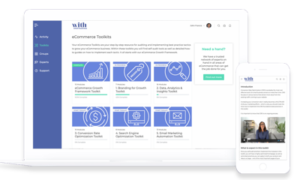What is a target audience?
A target audience is a specific group of customers most likely to respond positively to your products and/or services. They are a set of individuals sharing similar needs or characteristics that your company hopes to serve. These individuals are usually the end users most likely to purchase your product.
Target audiences can be defined by demographics (ie. age, income, gender, etc.) and psychographics (ie. personality, values, interests, etc.)
Why is identifying your target audiences important?
Identifying your target audience/s helps you to develop effective marketing communication strategies where you can create highly relevant content and messaging to authentically connect with your audience. Defining your target audiences will also help you to define or further refine your tone of voice that really speaks to your customer.
To define and document your target audiences you should consider the following characteristics. Please note that you can select the relevant demographics and psychographics – you don’t need to have all of these defined.
These days demographics alone are very broad. To really define and connect with your audiences, understanding their psychographics, challenges and pain points will bring your brand much closer to your audience:
Here are multiple factors you can consider when identifying and defining your target market.
Demographics:
- Age
- Gender
- Race
- Marital status
- Number of children (if any)
- Occupation
- Annual income
- Education level
- Living status (homeowner or renter)
Geographics:
Marketing geographics involve the dividing of consumers into smaller, more manageable segments using geographic location as the main determining factor, such as:
- Climate
- Size
- Urban, rural
- Domestic, international
- Regions
Sociographics:
Sociographics take the target market down to the level of the individual.
Sociographics are the characteristics that influence the way people receive and perceive messages. Sociographic variables fine-tune our understanding of our customers to establish hyper-relevant marketing, and optimize our communication with them.
Examples of sociographic variable:
- Family Life Cycle
- Socioeconomic Status
- Religion
- Nationality/Race
- Language
- Readiness-To-Buy Stage
- Decision Making Unit
Behavioural:
- How loyal are they to a brand in your category?
- What are their expectations of the benefit of the product?
- What is their usage behaviour of your type of product or services?
Psychographics:
- Personality
- Values
- Opinions
- Attitudes
- Interests
- Lifestyles
Barriers to buy:
- Too expensive. This is the most common reason for not buying
- Too complicated. Complicated means there’s a learning curve involved. …
- Too risky. When you sell a product, you’re selling benefits
- Not urgently needed. Your product may be cheap, it may be simple and it may work very well.
- Not trustworthy. …
- Not the best
Also considering your target audiences challenges / pain points, what is your product or service offering, your solution. Then use key messaging that is relevant for the nuances of each target audience – if you have your base of foundation content, you can use this to tweak for each target audience and product offering.
Ideally you have 3 target audiences defined, even if they are all the same demographics and some of the psychographics have variations – that is great – as the tighter you can narrow your niches, the better you can connect with your audience. Reference the template and the example to help you document your target audiences.


